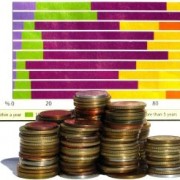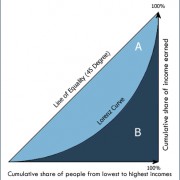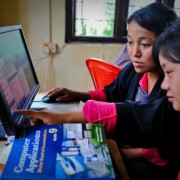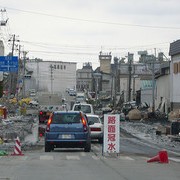Archive | Blog RSS feed for this section
Regional cooperation and integration
 Miscellaneous
Miscellaneous
 Social development and protection
Social development and protection
 Gender
Gender
 Regional cooperation and integration
Regional cooperation and integration
 Governance and public sector management
Governance and public sector management
 Industry and trade
Industry and trade
 Infrastructure
Infrastructure
 Governance and public sector management
Governance and public sector management
 Finance sector development
Finance sector development

Is regional economic integration enough? The search for ‘Wave 3’ growth

“Those who cannot remember the past are condemned to repeat it,” said philosopher George Santayana. The aim of this paper is to draw lessons from Asia’s supposed “growth miracle” by disaggregating when, where—and why—growth occurred to better understand the roles of exogenous factors versus domestic policy choices. Our thesis is that the post-World War II “miracle” growth shared by many regional economies was a result of a unique set of circumstances linked not to their “Asian-ness”—but to exogenous, geo-political, developments and, in particular, to the Cold War. The Cold War was a battle for ideological leadership in political and economic domains between two nuclear powers who grew to accept a status quo based on the principle of mutual assured destruction (MAD).
The rise of Asia and the new world order

The global economy is undergoing a fundamental change. Despite concerns over slowing growth in the People’s Republic of China, India, and Japan, and the possible dissolution of the eurozone, global economic growth is accelerating. How can this paradox be explained? If the global economy is shifting toward the more rapidly growing economies, then the world’s growth rate would shift toward the growth rates of the more rapidly growing economies. Thus, even if the growth rates of the PRC and India were to slow, global growth, which is considerably lower than that of both countries, would accelerate. The growth acceleration will lead to a new world economic order, associated with more rapidly growing countries such as the PRC and India, which are going to have a larger share of the global economy.
Confronting rising inequality in Asia

Developing Asia’s impressive growth continues, but faces a new challenge—inequality on the rise.1 Over the last few decades, the region has lifted people out of poverty at an unprecedented rate. But more recent experience contrasts with the “growth with equity” story that characterized the transformation of the newly industrialized economies in the 1960s and 1970s. In the 12 economies that account for more than four-fifths of the region’s population, income disparities expanded during the last two decades—despite the region’s world-beating performance in raising average incomes and reducing poverty.
Women helping women: key to economic growth in Asia

In the next 50 years, most economic growth worldwide will take place outside the G7 countries. But that’s only half the story. Who are the people who will be the driving force for this growth? Many will be women. But too seldom conversations about economic growth turn a blind eye to gender issues, despite the fact that women comprise more than half of the global economy, 40% of the global workforce (Commonwealth Workforce Council), and $20+ trillion in financial spending worldwide (International Finance Corporation 2011). Women have a multiplier effect as consumers, building markets as they make the majority of purchase decisions in households. The question is not whether women will contribute to the future global economy but by how much – and where.
The eurozone crisis will not stop Asia’s economic integration

ASEAN aims to create an ASEAN Economic Community by 2015, while the signing in May 2012 of a Trilateral Investment Agreement by the People’s Republic of China, Japan, and the Republic of Korea was a milestone in cooperation between three countries that together account for nearly 20% of global GDP and trade. The pact could lead to a three-way, free trade agreement (FTA) between the economic giants. Financial cooperation in ASEAN+3 has been accelerating. The region’s emergency financial safety net, the Chiang Mai Initiative Multilateralization (CMIM), has doubled in size as decided by officials in May 2012, although it is yet to be made operational.
Indonesia’s fuel subsidies benefit the rich far more than the poor

Although it is widely considered to be an ineffective policy, a number of developing countries offer universal fuel subsidies. However, the prolonged implementation of fuel subsidies creates a misallocation of resources as a subsidy targets the fuel rather than the consumer. Consequently, fuel subsidies benefit the affluent more than the poor. A number of countries implement fuel subsidies, including Algeria, the People’s Republic of China, Ecuador, Egypt, Indonesia Iran, Iraq, Malaysia, Nigeria, Russia, Saudi Arabia, Thailand, and Venezuela. Granado et al (2010) reported that in countries that have subsidized fuel, on average, the top income quintile consumed about six times more subsidized fuel than the bottom quintile.
PRC and India: pursuing the same approach to free trade agreements?

Deep free trade agreements (FTAs) are key to trade-led growth in Asia. Deep FTAs can support a comprehensive regional agenda for liberalization covering reductions in barriers to goods and services trade as well as opening new areas beyond the current purview of WTO negotiations (like investment, trade facilitation, competition, government procurement and intellectual property). Deep agreements can also help lock in structural reforms at national-level and promote implementation of second generation reforms. Accordingly, deep FTAs are useful for opening markets and removing obstacles to the spread of production networks throughout Asia and the Pacific. The depth of FTAs among Asia’s developing giants—the People’s Republic of China (PRC) and India—is a topical issue.
Japan’s post-disaster growth strategy

The Great East Japan Earthquake on 11 March 2011 was the biggest earthquake recorded in Japanese seismic history, and the fourth largest recorded in the world. The scope of the triple disaster consisting of an earthquake, a tsunami, and a nuclear accident, far exceeded that of the Hanshin Earthquake of 1995. The repercussions of this disaster spread far beyond the geographical areas directly affected. For example, electric power supply capacity in the Kanto area, which accounts for about 40% of Japanese gross domestic product (GDP), fell at one stage by about 40% from the normal peak—a severe constraint on economic activity, and the supply of nuclear-generated electric power has largely been cut off since then. Production supply chains were significantly disrupted, not only in Japan, but all over Asia, although they recovered surprisingly rapidly.
G20 membership: horses-for-courses

The G20 leaders group achieved several significant examples of international economic cooperation in the first few meetings during the global financial crisis in 2008 and 2009. In the fraught crisis atmosphere, the G20 discussion encouraged bolder fiscal expansion, discouraged trade protectionism, spurred the world’s financial regulators into action to re-write the inadequate rules, and drew attention to the antiquated governance structure of the International Monetary Fund (IMF). With the immediate threat of global depression averted and the eurozone crisis not amenable to a global approach, many commentators observe that more recent meetings have lost a sense of urgency and purpose. This group has been successfully established as the paramount international economic coordination body (taking over that role from the G7 and G8) with a far more representative membership, but with the urgency of the immediate crisis gone, critical attention is focusing on the G20’s composition and agenda.
Avoiding a household-debt-driven crisis in Korea

The economy of the Republic of Korea (henceforth Korea) has been on a steady growth path despite the global financial and eurozone crises. Recently, Fitch and S&P, the global credit rating agencies, upgraded Korea’s sovereign credit rating by one notch. Fitch’s rating for Korea, AA-, is the fourth-highest rating on its rating scale and a notch higher than those of the PRC and Japan. Notwithstanding these positive signs, Korea’s economy faces many internal and external challenges. One of the most serious is excessive household debt. Korea’s household debt has increased drastically since 2000. For the past 12 years, household debt has increased by an average of 13.3% every year, far in excess of the average annual nominal GDP growth rate of 6.2% during the same period.


Search
Subscribe / Connect to Asia Pathways
Subjects
- Agriculture and natural resources
- Blog
- Capacity development
- Climate change
- Economics
- Education
- Energy
- Environment
- Finance sector development
- Gender
- Governance and public sector management
- Health
- Industry and trade
- Information and Communications Technology
- Infrastructure
- Miscellaneous
- Population
- Poverty
- Private sector development
- Regional cooperation and integration
- Sanitation
- Social development and protection
- Transport
- Uncategorized
- Urban development
- Video Blog
- Water
Recent Posts
- Transforming ASEAN: Advancing Regional Integration, Social Inclusion, and Environmental Sustainability
- Development of the Creative Economy in Asia and the Pacific
- Kashima City’s Great Transformation: Where Industry Meets Community
- Mechanization Driving the Future of Agriculture in Asia
- Natural Capital: Valuing Nature to Protect and Restore Ecosystem Services for Sustainable Development




Recent Comments